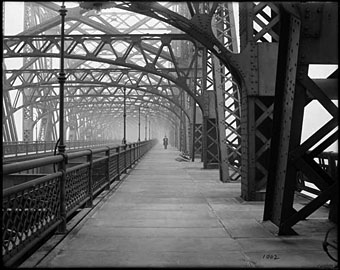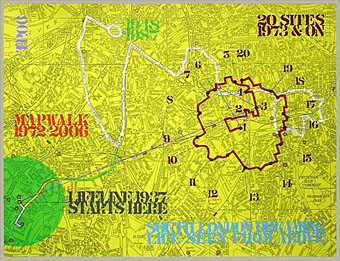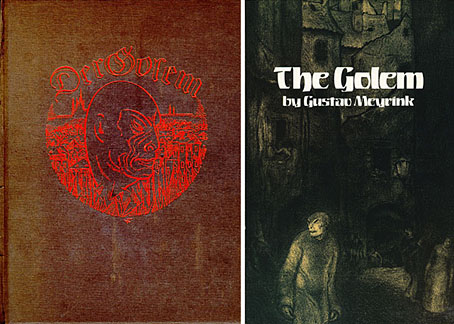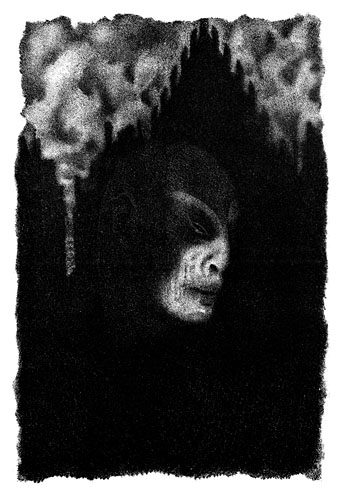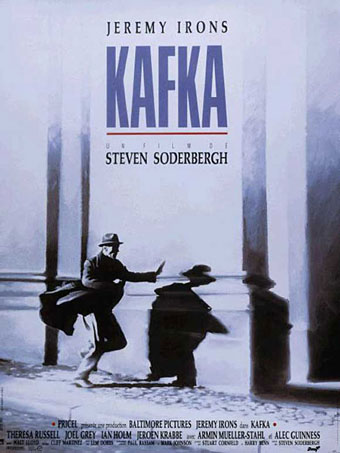The larval stage of a new kind of architecture
| Ballard on Bilbao.
Category: {cities}
Cities
Eugene de Salignac
Queensboro Bridge, exposures made for experiment, February 9, 1910.
From New York Rises: Photographs by Eugene de Salignac at the Museum of the City of New York until October 28th. Via Boing Boing.
Previously on { feuilleton }
• Luther Gerlach’s Los Angeles
• The Bradbury Building: Looking Backward from the Future
• Karel Plicka’s views of Prague
• Downtown LA by Ansel Adams
20 Sites n Years revisited
South London Dreaming by Tom Phillips (2007).
Tom Phillips’ ongoing art project, 20 Sites n Years, is now presented on his site with a facility which allows the viewing of all the photos for each location. (And if you haven’t come across the project before, the specifications are here.) Nice being able to step through the photos year by year especially if you don’t have a copy of Phillips’ Works and Texts. In an earlier description of the project he speculates on its possible manifestations in the future since the plan is that it be continued indefinitely after its creator’s death. This small web manifestation is one development that wouldn’t have been anticipated in 1973. Other possibilities, such as the likelihood of South London being eventually submerged by a rising Thames, were fanciful in the Seventies but no longer seem so remote.
Previously on { feuilleton }
• The Tom Phillips blog
• 20 Sites n Years by Tom Phillips
Hugo Steiner-Prag’s Golem
Der Golem, first edition (1915) and Dover reprint (1986).
Illustrations by Hugo Steiner-Prag.
Before leaving Prague (for the time being), it’s worth mentioning the lithograph illustrations by Hugo Steiner-Prag (1880–1945) for Gustav Meyrink’s The Golem. These atmospheric drawings always remind me of the production sketches Albin Grau created for Murnau’s Nosferatu, eine Symphonie des Grauens in 1922. Grau was an occultist as well as a horror aficionado and would certainly have read Meyrink’s book which was a Europe-wide bestseller when first published. The success of the novel inspired Paul Wegener’s first Golem film (now lost) which in turn helped fuel the demand for horror films that led eventually to Nosferatu.

Nosferatu poster by Albin Grau (1922).
There’s little of Steiner-Prag’s work available on the web but the Dover paperback above contains all the illustrations. The novel has been re-translated recently but I’ve yet to read one of the more recent editions to see how it compares with Dover’s 1928 Madge Pemberton version.
The Golem by Hugo Steiner-Prag (1915).
Elsewhere on { feuilleton }
• The illustrators archive
Previously on { feuilleton }
• Nosferatu
• Barta’s Golem
Steven Soderbergh’s Kafka
Do you detect a theme this week? The recent Pragueness had me watching this favourite film again. I unfairly dismissed Soderbergh after his debut, Sex, Lies and Videotape (1989), which I found to be two hours of yuppie tedium despite its winning the Palme D’Or at Cannes. The prize did enable him to make Kafka (1991), however, so I shouldn’t complain although I didn’t get to see this until it turned up on TV years after its release. The film was a major flop and put Soderbergh in the wilderness until Out of Sight (1998), his first outing with George Clooney.
Kafka is one of a small group of works wherein well-known writers become embroiled in stories which parallel their fiction. Joe Gores’ Hammett (filmed by Wim Wenders in 1982) did this with Dashiell Hammett while Mark Frost in his novel, The List of Seven, had a pre-Sherlock Holmes Arthur Conan Doyle becoming involved in a Holmesian mystery. The screenplay for Kafka by Lem Dobbs has the author falling in with anarchist revolutionaries in order to solve the death of a co-worker and a bureaucratic conspiracy. This was obviously too clever for a general audience, being littered with references to Kafka’s life and work and also to German Expressionist cinema with names like “Orlac” and “Murnau” comprising key plot elements. Dobbs wrote a couple of other noteworthy screenplays after this, Dark City, a noirish fantasy that does what The Matrix did only with greater imagination, and The Limey (1999), another Soderbergh film with a great performance by Terence Stamp as a vengeful Cockney gangster on the loose in Los Angeles.

Alan Bennett had already written something similar to Kafka in his 1986 TV film for the BBC, The Insurance Man, which concerns a dye worker becoming enmeshed in the labyrinthine bureaucracy of the Worker’s Accident Insurance Institute where Kafka worked as a clerk. Daniel Day-Lewis made a marvellous Franz Kafka in Bennett’s play, and was much more suited to the role than Jeremy Irons is in Soderbergh’s film. This is a shame since everything else about Kafka is excellent, from Walt Lloyd’s moody photography, and the fabulous cymbalom-inflected score by Cliff Martinez, to the cast which includes the wonderful Theresa Russell, Joel Grey, Ian Holm and, in one of his last performances, Alec Guinness.
Kafka is also the Prague film par excellence, making great use of the city’s Old Town and landmarks such as the Charles Bridge and Prague Castle, a building which dominates the story as well as many of the outdoor scenes. In fact I find myself watching it as much for the settings than anything else. Soderbergh enjoys cinematic pastiche and Kafka owes a great deal to The Third Man (which did for post-war Vienna what Kafka does for Prague) and—inevitably—Orson Welles’ Kafka adaptation, The Trial. Theresa Russell brings Vienna with her via Nicolas Roeg’s Bad Timing, Joel Grey was in Cabaret, of course, and Alec Guinness isn’t so far removed from his role as retired spy George Smiley in the BBC’s John le Carré films. And halfway through the film there’s a great surprise which I won’t spoil here.
Kafka is available on DVD finally, although if you’re in the US you’ll have to import it. Soderbergh has talked about reworking the film in a longer version which I’d like to see if he ever gets round to it. Not an easy film to find but it’s worthy of your attention.
Previously on { feuilleton }
• Kafka and Kupka
• Alexander Hammid
• How to disappear completely
• Karel Plicka’s views of Prague
• Giant mantis invades Prague
• Nosferatu
• Barta’s Golem

